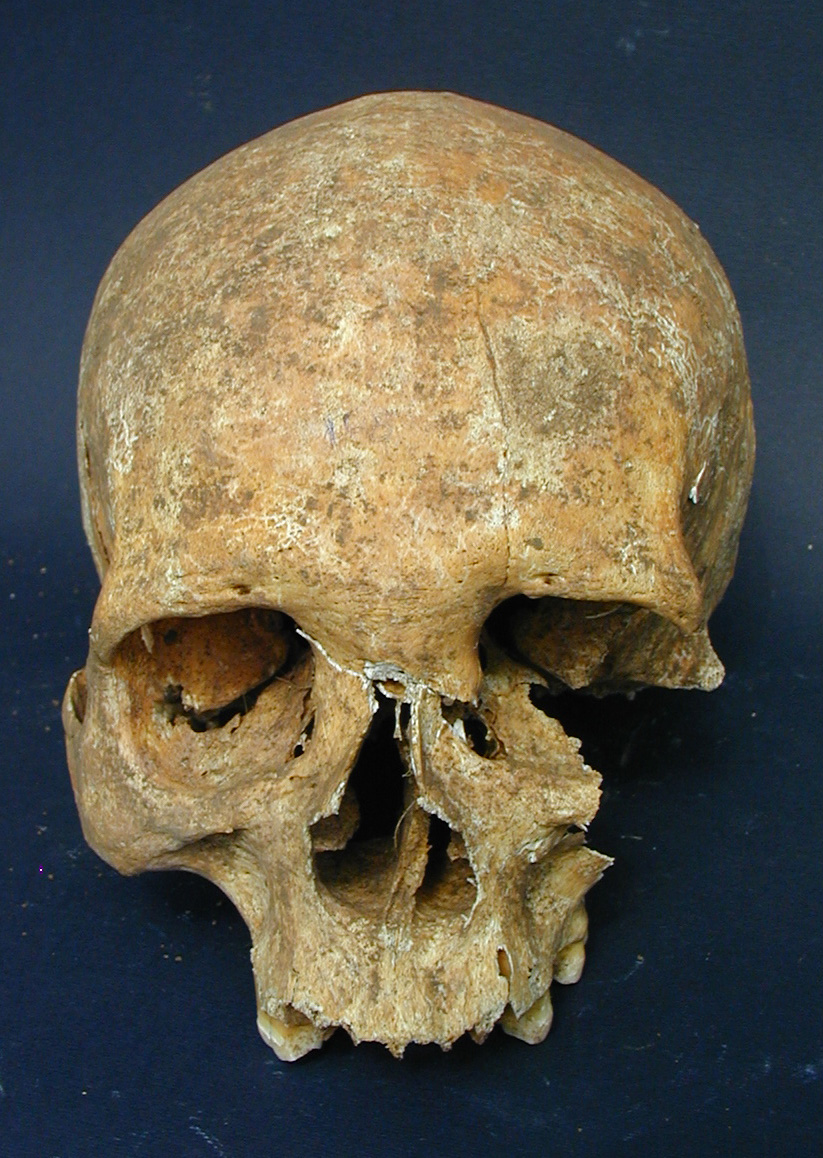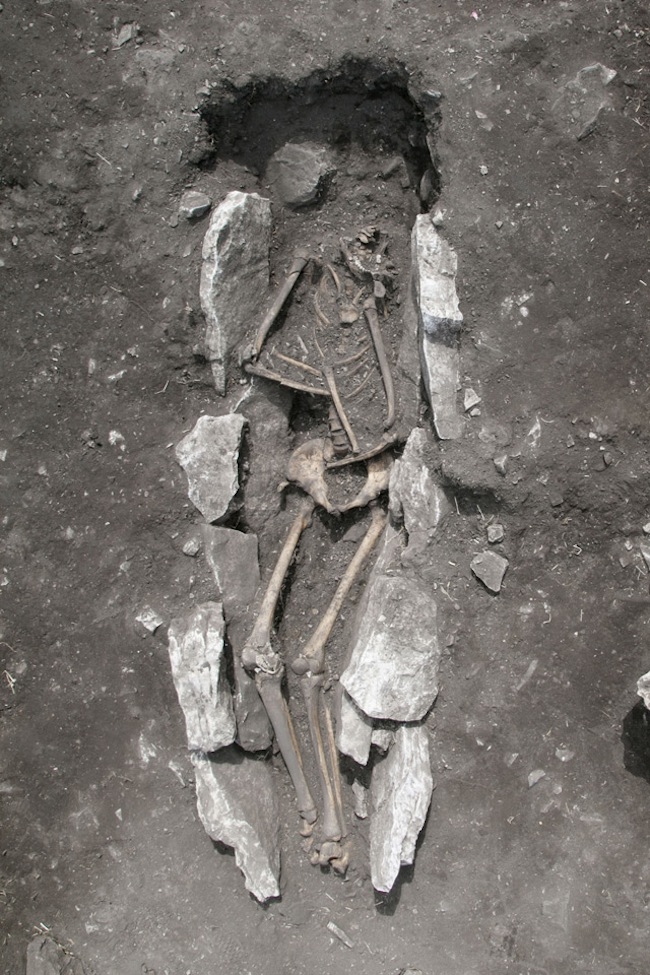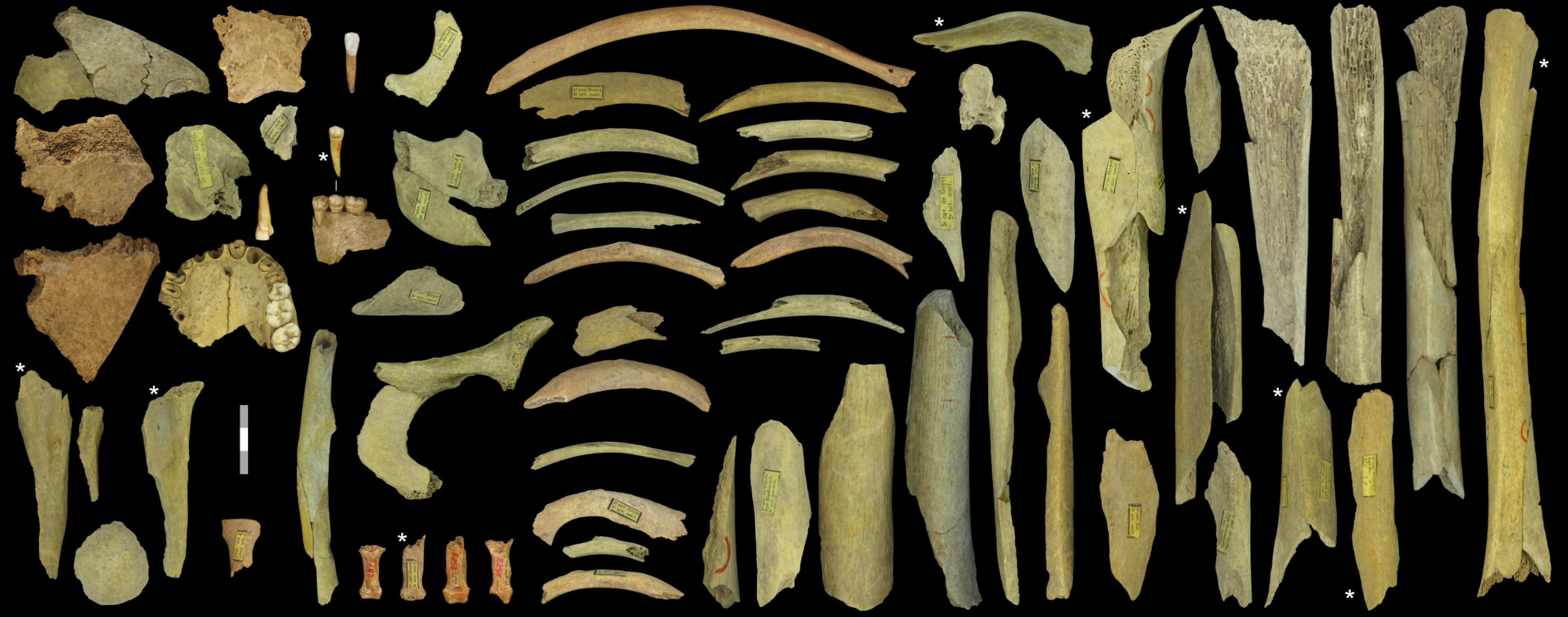25 grisly archaeological discoveries
The first leper

Leprosy, now known as Hansen's disease, has long carried a stigma. The disease is not very contagious, but lepers have been banished and snubbed throughout history, owing in part to the disfiguring sores caused by the disease.
One archaeological find suggests that the stigma surrounding leprosy goes way back. A 4,000-year-old skeleton discovered in India is the oldest known archaeological evidence of leprosy. The fact that the skeleton survived suggests the person was an outcast: Hindu tradition calls for cremation, and only those deemed unfit were buried. The skeleton was buried in a stone enclosure filled with ash from burned cow dung, a substance then thought to be sacred and purifying.
Leper warrior

Lepers haven't always been universally reviled. In medieval Italy, they may have even joined the ranks of soldiers and fought battles. A skeleton recently unearthed in a medieval Italian cemetery bears the telltale signs of leprosy as well as what appears to be a sword wound. The man, who may have died in battle, was buried with his comrades.
Other graves in the cemetery are similarly macabre. At least two contained the bodies of men who'd survived massive head trauma, including what looks like a battle-ax wound. One man, likely wounded by a mace, seems to have gotten the medieval version of brain surgery after the injury.
Acrobat sacrifice

Evidence of human sacrifice is found the world over, but one discovery of a possible sacrifice site, reported in 2008 in the journal Antiquity, seems particularly bizarre. In an ancient building in what is now Syria, archaeologists uncovered a strange arrangement of human and animal bones. Three human skeletons lay side-by-side, headless. Judging by unusual skeletal injuries and overdeveloped attachment areas for ligaments and bones, the researchers identified one of the skeletons as a possible acrobat.
The building was filled with dirt and abandoned after the headless bodies were left there, leading the researchers to suspect that the animals and entertainers were sacrifices, perhaps left after a natural disaster of some sort. Celebrity in ancient Syria may have had its downsides.
Human sacrifice

A teen boy buried at an ancient alter at Mount Lykaion in Greece may have been a sacrifice to the god Zeus.
The site has an association with human sacrifice in ancient texts, including a legend that a king named Lycaon once sacrificed a baby at the alter and promptly turned into a wolf. That story was passed on by the writer Pausanias, who lived from A.D. 110 to 180. Researchers aren't sure whether the teen boy was a true human sacrifice, but it was an unusual place for a burial, they said.
"It's not a cemetery," archaeologist David Gilman Romano of the University of Arizona told the Associated Press in August 2016.
Cave cannibalism

Did Neanderthals eat each other? A bunch of bones found in a Belgium cave suggest the answer is yes.
In July 2016, researchers reported that they'd discovered cut scars and hammering marks on bone fragments from four adult and one juvenile Neanderthals who lived between 40,500 and 45,500 years ago. The evidence was "unambiguous" for cannibalism, the scientists said. The Neanderthals had been butchered alongside horses and reindeer, whose bones were found alongside the human relatives. Evidence of Neanderthal cannibalism has been found at other European sites, including in Spain, where some bones appeared to have been broken to get at the nutritious marrow inside.
Sign up for the Live Science daily newsletter now
Get the world’s most fascinating discoveries delivered straight to your inbox.

Stephanie Pappas is a contributing writer for Live Science, covering topics ranging from geoscience to archaeology to the human brain and behavior. She was previously a senior writer for Live Science but is now a freelancer based in Denver, Colorado, and regularly contributes to Scientific American and The Monitor, the monthly magazine of the American Psychological Association. Stephanie received a bachelor's degree in psychology from the University of South Carolina and a graduate certificate in science communication from the University of California, Santa Cruz.










